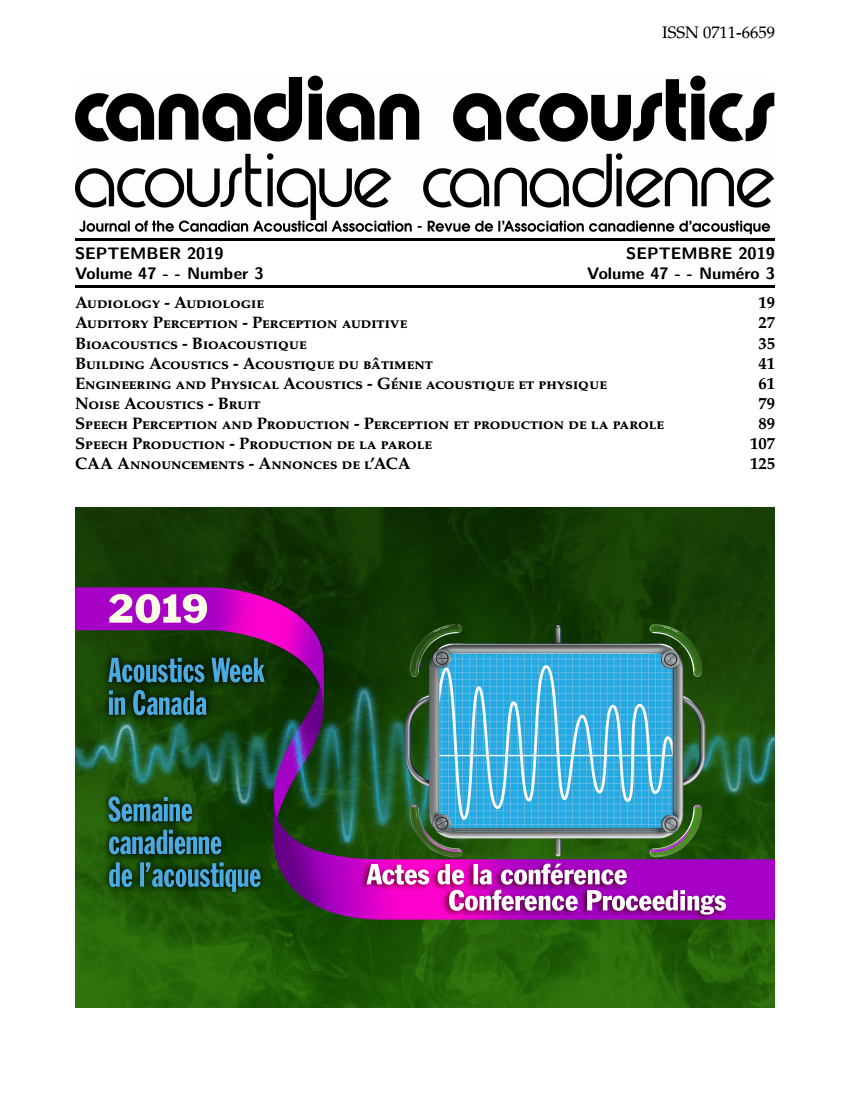L2 Production of American English Vowels in Function Words by Spanish L1 Speakers
Abstract
The present study investigates the production of American English (hereafter English) vowels in both function and lexical words by Spanish native speakers (n=62) and English native speakers (n=30) in recordings from the Speech Accent Archive (Weinberger & Kunath, 2011). Vowels contained in English function words are often reduced (Jurafsky et al., 1998), while those in Spanish are less so (Hualde, 2005). Thus, the Spanish speaker learning English must learn not only a new vowel inventory but also the process of reducing these vowels in function words. The majority of research on L2 speech has focused on vowels in lexical items, a literature gap that the current study addresses. The recordings were analyzed acoustically in Praat (Boersma & Weenink, 2016), where the first two formant values of each vowel token were extracted from the vowel midpoint. Formant values were normalized with the “Nearey Intrinsic” method in phonTools (Barreda, 2015). As age of onset of acquisition (AOA) is known to affect L2 pronunciation, the Spanish L1 speakers were split into two groups based on AOA. Both learner groups’ productions were compared to those of native speakers with a MANOVA run for each vowel, with normalized formant values as the dependent variables, and L1 as the independent variable. Pillai scores from the MANOVAs were used as a measure of vowel overlap (Hay et al., 2006). Pairwise comparisons were also run between vowels within groups to determine the extent of vowel neutralization in function words. In function words, the low AOA group patterned closely with the native speaker group, showing complete neutralization of some vowels and partial neutralization of others. The high AOA group showed partial neutralization of vowels in function words, which did not happen in lexical items. Results are discussed in the context of L2 speech learning theories and general phonetic theory.
Additional Files
Published
How to Cite
Issue
Section
License
Author Licensing Addendum
This Licensing Addendum ("Addendum") is entered into between the undersigned Author(s) and Canadian Acoustics journal published by the Canadian Acoustical Association (hereinafter referred to as the "Publisher"). The Author(s) and the Publisher agree as follows:
-
Retained Rights: The Author(s) retain(s) the following rights:
- The right to reproduce, distribute, and publicly display the Work on the Author's personal website or the website of the Author's institution.
- The right to use the Work in the Author's teaching activities and presentations.
- The right to include the Work in a compilation for the Author's personal use, not for sale.
-
Grant of License: The Author(s) grant(s) to the Publisher a worldwide exclusive license to publish, reproduce, distribute, and display the Work in Canadian Acoustics and any other formats and media deemed appropriate by the Publisher.
-
Attribution: The Publisher agrees to include proper attribution to the Author(s) in all publications and reproductions of the Work.
-
No Conflict: This Addendum is intended to be in harmony with, and not in conflict with, the terms and conditions of the original agreement entered into between the Author(s) and the Publisher.
-
Copyright Clause: Copyright on articles is held by the Author(s). The corresponding Author has the right to grant on behalf of all Authors and does grant on behalf of all Authors, a worldwide exclusive license to the Publisher and its licensees in perpetuity, in all forms, formats, and media (whether known now or created in the future), including but not limited to the rights to publish, reproduce, distribute, display, store, translate, create adaptations, reprints, include within collections, and create summaries, extracts, and/or abstracts of the Contribution.


